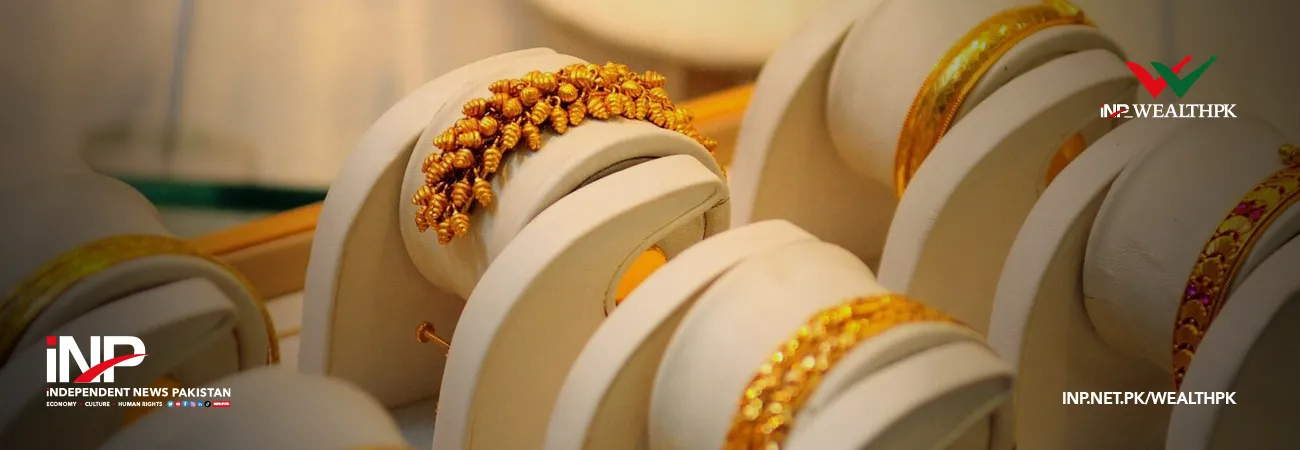INP-WealthPk
Muhammad Luqman
Whether in Lahore’s fabulous Anarkali Bazaar or the upscale Liberty Market, women are flocking artificial jewellery shops during the current wedding season, reports WealthPK. With gold prices doubling over the past year, middle-class buyers now opt for contemporary brass jewellery sets priced at just Rs50,000, as similar gold ornaments of the same design and weight cost more than ten times as much. Necklaces, bracelets, ear rings, nose pins and anklets are even available in centuries-old Mughal era designs of Minakari, Kundan, Polki and Nauratan.
The price of yellow metal has increased from Rs160,000 per tola (11.6 grams) in 2024 to Rs303,000 lately. Owing to its ever-increasing demand, artificial jewellery in oriental and western designs has flooded markets across all small and big towns in Pakistan. Now one can easily find a wide range of party-wear, wedding wear, casual and fancy ornaments. “I recently started selling artificial jewellery, as very few buyers of gold ornaments turn up these days,” Shaukat Ali, whose family has been in the jewellery business for the last three generations, told WealthPK.
He said master copies of gold designs and replicas of oriental and western designs were being made on order. “Even customized ornaments can be made available for jewellery lovers in the minimum possible budget,” Shaukat Ali said. Besides stone-studded artificial jewellery, one-carat gold ornaments are also in vogue. These gold-plated pieces, primarily imported from Turkey and Singapore, as well as from India through a third country, cater to the quality-conscious middle class. This high-end fashion is meeting the demand of families who prefer to see their daughters wearing jewellery bespeaking gold.
“Wearing artificial jewellery is still considered something beneath one’s dignity in our society but there is no choice, as parents yearn to see their daughters donning a beautifully cast glittering jewellery set, though not of pure gold,” said Rashid Ahmad, a retired government official, while buying artificial jewellery at Bano Bazaar. The skyrocketed gold price has proved a boon for the artificial jewellery industry. In Lahore’s Dhobi Mandi gold market, most of the jewellers are no more casting gold ornaments.
Rather, they have turned to the new lucrative business of artificial jewellery. Thousands of workers at these shops are now crafting non-gold jewellery. “More and more goldsmiths are turning to the new emerging business. No doubt, change is always painful. But it is never too late to re-position in the changing circumstances,” said Rana Moazzam Waheed, Chairman of the Gems and Gold Traders Association, Lahore. The penchant for non-gold jewellery has increased in Pakistan lately, but these have been the most sought-after articles in the West and other developed countries for decades.
Even in countries like India and Turkey and the Middle East region where gold demand is huge, more and more people are turning to artificial jewellery. The market size of imitation or artificial jewellery has lately touched the mark of USD15 billion and is projected to grow to USD25 billion in the next five years. Artificial jewellery products may take decades to have a big pie in the world’s traditional jewellery market size of USD353 billion. But the increasing gold prices are set to drive more and more people toward non-gold jewellery.
Credit: INP-WealthPk




